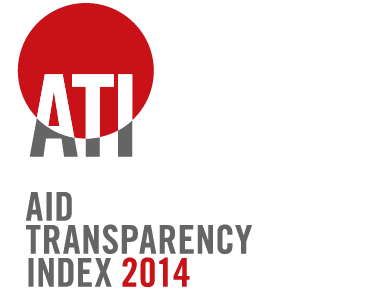A.
There is a race to the top, but the majority of organisations are lagging behind in meeting their international commitments.
There is a race to the top, but the majority of organisations are lagging behind in meeting their international commitments.
- A leading group of organisations are publishing large amounts of accessible, comparable and timely information about their activities. These organisations are making continuous efforts to improve the comprehensiveness and quality of their aid information, demonstrating real commitment to aid transparency.
- Many donors are still dragging their feet and have made limited progress since Busan. These organisations are at a real risk of not meeting their aid transparency commitments by the 2015 deadline.
- There is still a long way to go in getting a full picture of all development flows, without which development effectiveness and improved donor coordination will be difficult to achieve.
B.
The lack of comparable, comprehensive and timely publication of information means that information on development cooperation is still difficult to access and use.
The lack of comparable, comprehensive and timely publication of information means that information on development cooperation is still difficult to access and use.
- It is still extremely hard to find detailed, disaggregated information on development activities funded by the majority of organisations assessed. Where information is available, it is scattered across hard-to-navigate websites or buried in PDFs.
- Although some organisations have started publishing their information in more comparable formats, it is not always comprehensive or up-to-date. Unless published in a timely and consistent manner, the information remains difficult to use.
- Information needed for planning and learning purposes is still too rarely published, particularly information on results, sub-national location, forward-looking budgets and impact appraisals.
C.
Progress is achievable, if the political will exists.
Progress is achievable, if the political will exists.
- Based on current trends, the international donor community is set to miss meeting the commitments made in Busan, but this outcome could be avoided. The Index findings demonstrate the ability of donors to rapidly turnaround their performance where the political and technical leadership exists.
- Some of the best performers and biggest improvers in 2014, including the AfDB, MCC, PEPFAR and UNICEF, have released comprehensive datasets over a relatively short period of time.
- Organisations of different sizes and types, including bilaterals, IFIs, multilaterals, humanitarian organisations, private foundations and vertical funds are able to do well and improve on a year-on-year basis – no particular type of organisation is unable to deliver on their commitments.
Recommendations
A.
The international donor community needs to work together to provide a full picture of development flows.
The international donor community needs to work together to provide a full picture of development flows.
- Those donors that are lagging behind on delivering their commitments should be held to account to ensure that progress on collective action and investments made by the leading organisations are not undermined.
- Organisations should coordinate to adopt a sustainable approach for lesson-sharing on best case practices, approaches to publication and addressing commonly-faced challenges.
- All donors should ensure the inclusion of transparency and open data as an integral part of the post-2015 agenda and share lessons learnt from the development effectiveness agenda.
B.
Organisations should improve the quality of their publication and promote use of the information.
Organisations should improve the quality of their publication and promote use of the information.
- All organisations should ensure that their development information is published in a timely, comparable, comprehensive and accessible manner. Financial data should be supplemented by descriptive and evaluative information including results, locations and project documents to enhance its usefulness.
- All organisations publishing to IATI should start using the data for their own internal management purposes and for identifying and addressing data gaps.
- Those organisations with comprehensive and good quality data should promote the use of their information by others, including recipient governments and civil society, and share lessons learnt with the wider development community.
C.
The clock is ticking – all organisations need to deliver on their aid transparency commitments by the end of 2015.
The clock is ticking – all organisations need to deliver on their aid transparency commitments by the end of 2015.
- Those organisations that are lagging behind on delivering their commitments should take urgent action and begin implementation in 2014.
- Organisations’ information management systems should be improved to capture more and better information in structured formats. Building IATI into information management systems and automating publication will make it easy to “publish once, use often.”
- All organisations should make their plans public and publish implementation schedules with specific timelines and delivery targets. They should discuss their priorities and approaches with potential users of the information.
